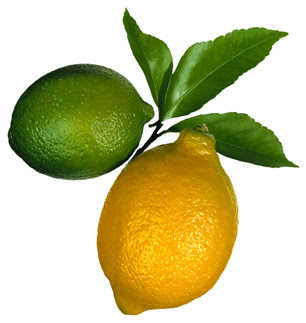On the one hand, an intimate wintry dinner with friends is
just the thing to restore your faith in the pleasures of hearth and home. Nothing
like a fire crackling away and the warm glow of candlelight to make you feel
that all’s right with the world. On the other hand, when that intimate dinner
falls days after the excesses of the holidays, it might also be just the thing
to make you wish you could spoon up a bowl of oatmeal and call it a night. There’s
only so much festivity one can endure and after you’ve hit your limit, you’ve
hit your limit.
If, your holiday overload notwithstanding, friends have
nonetheless been invited, something obviously must be served. But what? When
the thought of another roast is enough to make you retire your oven mitts and
resort to your drawer of take-out menus, here’s a dinner that will save the
day. It balances seasonal conviviality and the simplicity of a family supper. Nothing
takes too much time and, apart from slicing potatoes and apples, there’s almost
no effort involved. Not including salt & pepper or olive oil & butter,
no dish calls for more than five ingredients and those five called for are on almost
everyone’s hit parade. Who doesn’t love chicken, garlic, potatoes, salad, and
apples?
Don't, by the way, be alarmed by the quantity of garlic. When you leave the cloves whole, you don't release the sulfur compounds that give garlic its characteristic & strong taste; left whole, the cloves will soften into a sweet mellowness. In fact, despite the traditional name of this dish, I often add more than 40 cloves.
Chicken with Forty Cloves of Garlic
2 tablespoons olive
oil
1 tablespoon butter
3 chicken breasts
& 3 thighs - skin removed,
each piece cut in
half and sprinkled with salt & pepper
40 whole peeled
garlic cloves
½ cup chicken stock
½ cup dry white wine
Heat the oil and
butter over high heat in a large skillet and brown chicken pieces on each side.
Lower heat and add garlic, making sure the cloves settle on the bottom of the
skillet. Sauté for about 10 minutes. Add the wine and stock; bring to a simmer;
cover and let simmer for 15-20 minutes. That’s it.
Potato Galette
4 russet potatoes - peeled
& sliced into very thin discs
(if you have a mandoline, now’s the time to
use it)
3 tablespoons butter
Melt the butter in a
9-10” inch non-stick skillet. Pour most of it into a small bowl. Layer the
potato discs into the skillet, drizzling with the reserved butter and
sprinkling with salt and pepper as you go along. Cover tightly & brown over
a low heat for about 20-25 minutes; slide onto a plate & invert back into
the skillet. Cover & brown the other side for another 20 minutes or so.
Slide onto serving plate & cut into wedges. (You can, of course, sprinkle
in some minced garlic and/or herbs if you like.)
Endive Salad with Walnuts & Blue Cheese
3-4 heads Belgian
endive
½-1 cup toasted
walnut halves
4 ounces blue cheese,
crumbled
2 tablespoons fresh
lemon juice
4 tablespoons walnut
oil (or olive oil)
Separate endive
leaves but keep them whole. Toss in a large bowl with the toasted walnuts &
the crumbled Roquefort. In a small bowl, stir together the lemon juice and the
oil; season with salt and pepper. Toss onto the salad.
Apple Tart
4 cooking apples – peeled,
cored, quartered, and each quarter sliced into quarters
3 egg yolks
¾ cup heavy cream
5 tablespoons sugar
Pre-baked 9-11” tart
shell – you can buy one or make your own (I make mine in the food processor in
the usual way, using 1 ½ cups flour, a pinch of salt, 7 tablespoons butter, and
about 4 tablespoons ice water; refrigerate until cold; roll out & line a
tart shell; line with foil and pie weights; bake at 375° for 20 minutes; remove
foil & bake for another 20 minutes. Let cool before filling.)
Arrange apple slices
in concentric circles in the pre-baked tart shell. Whisk together the yolks,
cream, and 3 tablespoons of sugar. Pour over the apples. Sprinkle the remaining
2 tablespoons of sugar on top. Bake at 375° for about 45 minutes or until very
golden-brown. You can broil for a minute or two if you want it even browner.
Serve warm or at room temperature.











